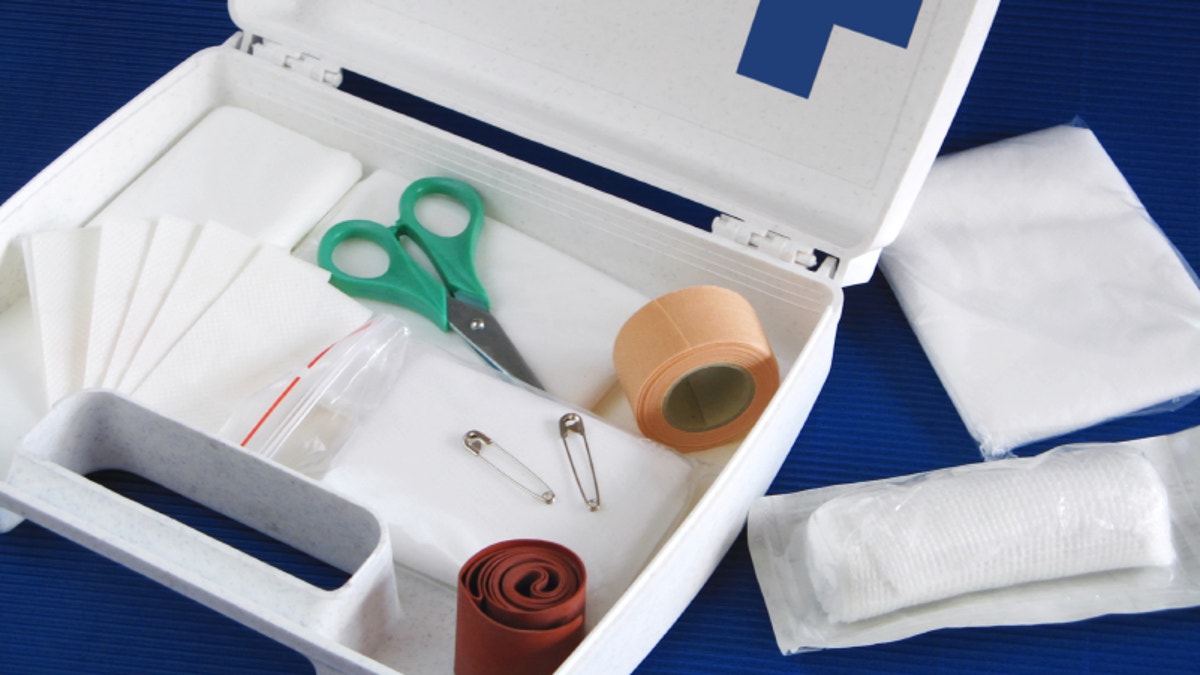
In the aftermath of Hurricane Sandy, which ravaged the northeastern United States and especially devastated the New Jersey and New York shores, many people are soberly appraising their preparedness. It’s hard to anticipate everything you might need to deal with a disaster like Sandy. Do you require a generator? Don’t forget batteries, flashlights, candles, canned foods, matches galore, and of course a hand-crank emergency radio so you know what’s happening when all the power goes out.
One aspect of emergency preparedness is first aid. What do you need? For starters, it’s wise to store up on bandages. If you’re fortunate, you may never have to use them. But if you’re not, you’ll be glad you have them on hand. Of the many types of bandages available, I recommend the ones with cloth backing. Plastic bandages may be okay, but they don’t hold up like the ones with fabric. A large pack of assorted bandages gives you options – small, medium and large. Make sure that you have at least one roll of medical tape too, and some larger bandage pads. Alcohol swabs in individual packets can be conveniently stored in a pocket, purse or glove compartment.
For topical applications to deal with cuts, burns, abrasions and bruises, keep hydrogen peroxide on hand to apply to unclean wounds before anything else. If you have a puncture, scrape or other skin problem that might infect, cleaning well with hydrogen peroxide is a first line of defense. Also, get some plain iodine. If you get a cut or a wound that may infect, follow cleaning with hydrogen peroxide, with direct application of iodine, which is potently antimicrobial.
On the natural side of the first aid equation, I also like to have manuka oil on hand, which kills bacteria, fungus and viruses. Tamanu oil, which I’ve mentioned many times, also offers antimicrobial activity and helps to heal cuts and other skin wounds quickly. These two oils are indispensable. For bruises, nothing works as well as arnica cream or gel. Made from the flowers of Arnica Montana, these preparations can significantly reduce swelling and bruising. So if you’ve been hit by an object or have been banged around, it’s arnica to the rescue. All these products are available at natural food stores and increasingly at drug stores as well.
In an emergency like a big storm, there’s often a lot of debris to pick up and remove. As a result of using muscles in a way that is not typical, you may get sore. This is where analgesic balms come in. Basically any balm that contains menthol, cajeput and methyl salicilate will help to soothe aching muscles and relive soreness when applied topically. I like Tiger Balm, the world-famous remedy from Singapore, which is available in many places, from natural food stores to corner convenience marts. White Flower oil, another aromatic product, also soothes in a similar manner.
You may find yourself in a circumstance in which clean water is hard to obtain. Keep on hand a basic water filter, whether an inexpensive one like the Britta tabletop model, or one of the camping filters like Pur or Katadyn. If you only have questionably clean water on hand, these products can help to ensure that you are drinking water without bacteria or other pathogens.
Are you familiar with those shiny space blankets that look like aluminum foil? Get a few. You may never need them, but if you wind up in the cold, you’ll be grateful for them. They weigh nothing, can be carried easily and can keep you warm in times of trauma.
Keep your first aid supplies in a convenient place that you can easily get to if the need arises. You can get a sturdy first aid case that will survive abuse and will store your supplies well. Do the same with your batteries, matches, candles, extra flashlights, hand crank radio and space blankets. Keep them together in one location, stored securely. When a storm or disaster hits and things go badly, you won’t have to hunt around all over to collect the items you need.
Here’s one last tip that is not about first aid, but will help in a disaster. Keep a “go bag.” This is a bag that contains emergency supplies, cash, a single change of clothes, a lighter, some energy bars or granola bars, and other things you may require like a knife and rope. A “go bag” should be stored in a spot where it can be grabbed quickly if the roof is caving in.
It’s not possible to prepare for every type of problem that may arise in an emergency, but if you put a little planning into it, you’ll be better off when things go wrong. Stay safe, and as the Boy Scouts say: Be prepared.
Chris Kilham is a medicine hunter who researches natural remedies all over the world, from the Amazon to Siberia. He teaches ethnobotany at the University of Massachusetts Amherst, where he is Explorer In Residence. Chris advises herbal, cosmetic and pharmaceutical companies and is a regular guest on radio and TV programs worldwide. His field research is largely sponsored by Naturex of Avignon, France. Read more at www.MedicineHunter.com.
